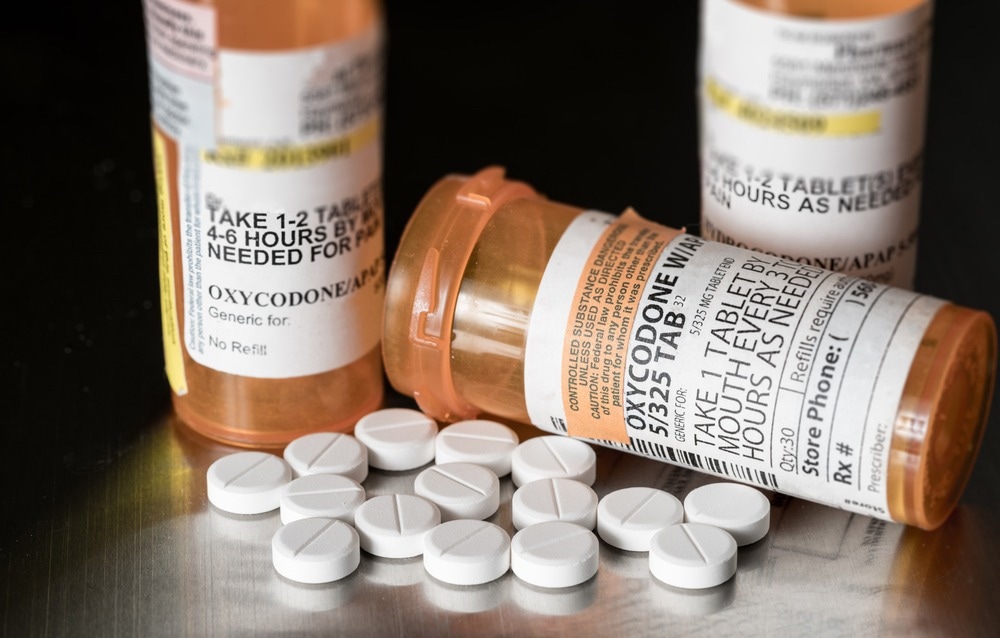Opioids are a class of drugs that affect certain opioid receptors throughout the entirety of the nervous system. Originating from the opium poppy Papaver somniferum, this drug represents a fundamental milestone in pharmacology and is the first case of a purely isolated, medically active ingredient. This analgesic, commonly used to treat severe pain, has led to the deaths of tens of thousands of people a year and is routinely abused by its users.

Image Credit: M-Foto/Shutterstock.com
While there are naturally occurring opioids such as morphine and codeine, there also exist semi-synthetic opioids (hydromorphone, oxycodone), as well as completely synthetic opioids. Though these synthetic opioids interact with the same receptors, they differ greatly in chemical structure compared to their natural counterparts.
History and Dangers of the Opioid Epidemic
The “Opioid Epidemic” originated in the 1990s, when medical professionals began prescribing an abundance of oxycodone and its derivatives. This led to an increase in drug abuse and overdoses. Even after this occurrence, a new second wave of opioid abuse began in 2010, as medical statisticians observed a rise in heroin overdoses. Finally, we see a third wave that is present today as the use of fentanyl and its derivatives becomes more widespread. For example, the CDC found that synthetic opioids caused 73% of all opioid-involved deaths in 2019.
The dangers of opioids can be found in their addictive and toxic properties. The opioids themselves cause respiratory depression, which leads to symptoms such as bradypnea, and apnea, which may cause death. In addition, the strength of these novel synthetic opioids is very apparent, with compounds like U-47700 (pink heroin) that are 7.5 times stronger than morphine. Even stronger are analogs like fentanyl, harboring an analgesic effect that is 100 times stronger than morphine, and carfentanil, which is 10,000 times stronger. There are many case examples of users purchasing some form of opioid, which the dealer can mistake for a much stronger, more potent analog. This leads the individual to take a much larger amount than he first anticipates, another reason for the upsurge in global overdoses.
Sociologists, bioethicists, and general medical practitioners tell us that patients under the use of opioids within a hospital setting that are prematurely released or are left with tremendous medical debt, persisting pain, or a feeling of isolation will often turn to these street-grade counterparts. This predominantly happens when they can no longer acquire the prescription for medical-grade opioids.
How Opioids Act Upon the Human Body
Viewing this intracellularly, we find that opioid agonists will bind to G-protein coupled opioid receptors, which in turn, cause the α subunit of G-protein to exchange its guanosine diphosphate (GDP) with guanosine triphosphate (GTP) (which is a method of phosphorylation). This reaction leads α-GTP to dissociate from the larger βγ complex, allowing both subunits to interact with other target proteins. Consequently, the cAMP cascade is inhibited, downregulating the production of cAMP-dependent protein kinase, resulting in the downregulation of the phosphorylation of multiple enzymes.
The net result is the exchange of neurotransmitters found amidst the post and presynaptic cleft. These opioids promote the upregulation of potassium in tandem with the inhibition of calcium conductance. While the former makes action potentials less likely to fire, the latter inhibits the emission of further neurotransmitters. We find that the cause of pain elimination is centered around activating opioid receptors within the spinal cord, inhibiting the signaling pathways that flow from the extremities to the brain.
In addition, the periaqueductal grey (PAG) plays a centralized role in pain descending pathways, working alongside the medulla oblongata and the spinal cord. The PAG’s role in animal physiology lies within the descending antinociceptive pathway (which affects exogenous and endogenous opioid-induced analgesia). This pathway modulates pain through the spinal cord by increasing dopamine levels in certain regions like the nucleus accumbens and the anterior cingulate cortex.

Image Credit: Steve Heap/Shutterstock.com
The Dangers of Synergistic Drug Moieties
One of the most prominent fears around the opioid epidemic has less to do with the opioids themselves and how users mix them with other analgesics/drugs. For example, screening has shown a large spike in carfentanil within the United States, Canada, and Sweden. However, within these toxicology reports, other drugs are routinely present in users’ systems, with co-occurring drugs such as cocaine, methamphetamines, and Benzoylecgonine. At one point in 2018, it was found that cocaine was present in 54% of opioid-related drug overdoses, which parallels other published results that involve the presence of carfentanil.
In Alberta, Canada, it was found that methamphetamines held the most frequent presence when administering drug assays. These synergistic effects of multiple analgesics are said to be giving rise to a fourth wave of the opioid crisis, reinforcing the need to routinely monitor the traffic of these drugs.
The reports that the NHS, CDC, and other medical institutions provide are imperative in aiding and preventing these drug overdoses. Fixed to these investigations should be the routine screening of newly synthesized opioids that are constantly undergoing. By providing accurate public health information to the people, routinely adding new opioid moieties to analytical methodologies, and monitoring the influx of these drugs within our communities, we become better equipped to tackle the opioid epidemic and establish the proper rehabilitation that these users require.
Sources:
- Belzak L, Halverson J. (2018) The opioid crisis in Canada: a national perspective. Health Promot Chronic Dis Prev Can. 2018 Jun;38(6):224-233. doi: 10.24095/hpcdp.38.6.02. PMID: 29911818; PMCID: PMC6034966.
- Solbeck P, Woodall KL, Martin TL. (2021) Strategic Decision-Making by a Forensic Toxicology Laboratory in Response to an Emerging NPS: Detection, Quantitation and Interpretation of Carfentanil in Death Investigations in Ontario, Canada, July 2017 to June 2018. J Anal Toxicol;45(8):813-819. doi: 10.1093/jat/bkab079. PMID: 34166495.
- Phillips JK, Ford MA, Bonnie RJ (2017) Pain Management and the Opioid Epidemic: Balancing Societal and Individual Benefits and Risks of Prescription Opioid Use. National Academies Press (US); 4, https://www.ncbi.nlm.nih.gov/books/NBK458661/
- Pathan H, Williams J. (2012) Basic opioid pharmacology: an update. Br J Pain. 2012 Feb;6(1):11-6. doi: 10.1177/2049463712438493. PMID: 26516461; PMCID: PMC4590096.
- Kosten TR, George TP. (2022) The neurobiology of opioid dependence: implications for treatment. Sci Pract Perspect. 2002 Jul;1(1):13-20. doi: 10.1151/spp021113. PMID: 18567959; PMCID: PMC2851054.
- Morgan MM, Christie MJ. (2011) Analysis of opioid efficacy, tolerance, addiction and dependence from cell culture to human. Br J Pharmacol;164(4):1322-34. doi: 10.1111/j.1476-5381.2011.01335.x. PMID: 21434879; PMCID: PMC3229764.
- Cicero TJ, Ellis MS. (2017) The prescription opioid epidemic: a review of qualitative studies on the progression from initial use to abuse. Dialogues Clin Neurosci. (3):259-269. doi: 10.31887/DCNS.2017.19.3/tcicero. PMID: 29302223; PMCID: PMC5741109.
Further Reading
Last Updated: Dec 13, 2022